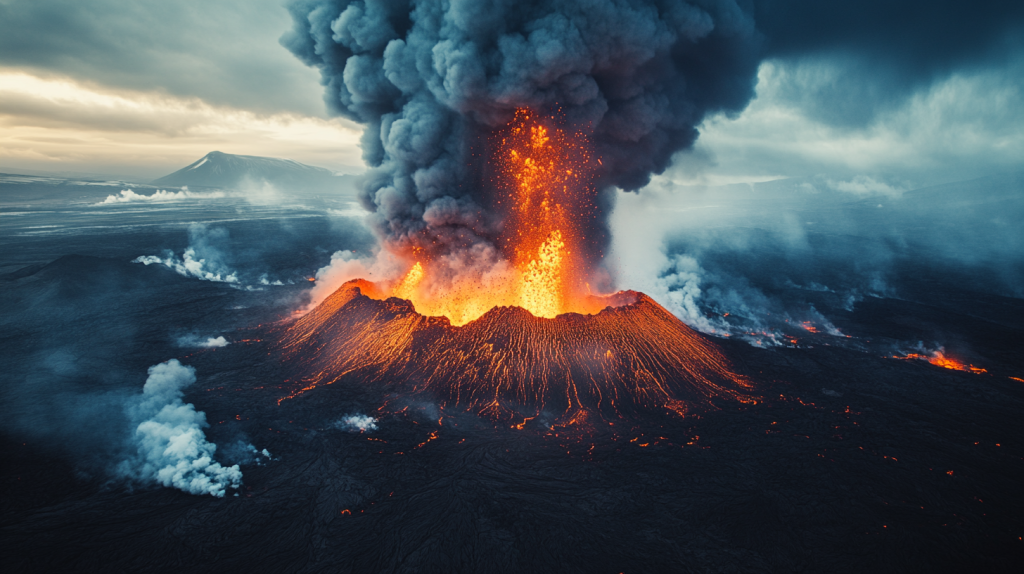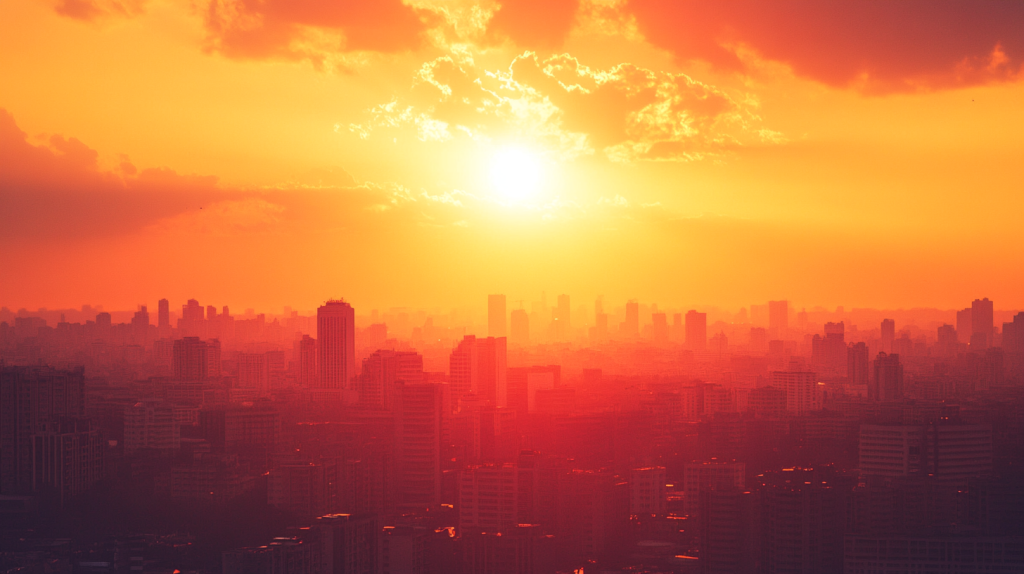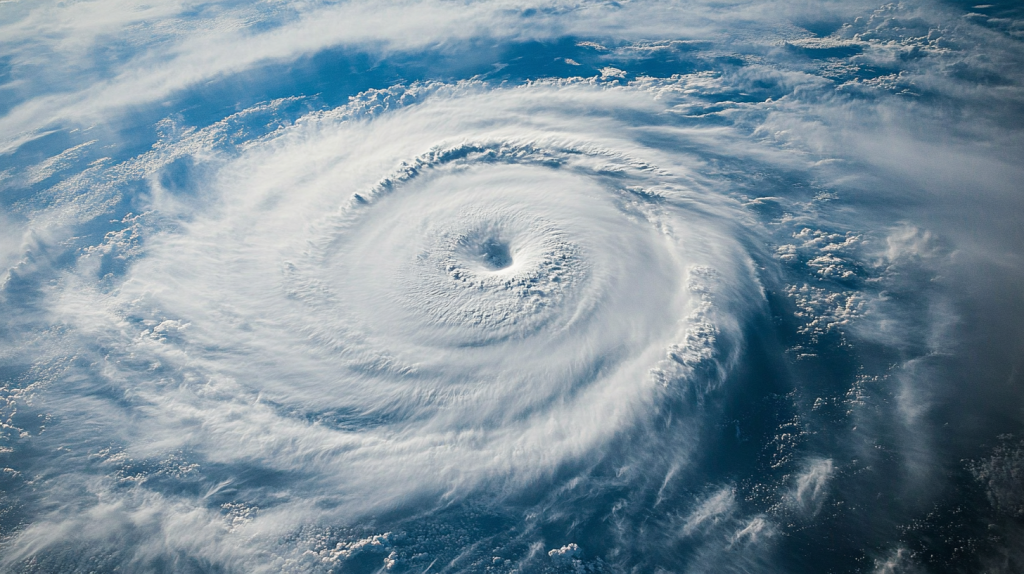I grew up in Tornado Alley, a section of the US where tornadoes were frequent. Each year from April to September, we’d watch the skies for signs of a coming storm and listen for the sound of the tornado sirens.
While I don’t miss the destruction, growing up knowing the unpredictability of Mother Nature left me in awe of these terrifying storms.
Tornadoes aren’t the only events that can change the world overnight. Some of these natural phenomena are rare, while others are a constant threat, but all of them are powerful enough to make you respect our Earth just a little bit more.
1. Supervolcanic Eruption

A supervolcanic eruption is one of the most catastrophic events imaginable. These volcanoes don’t just blow off their tops; they erupt with thousands of times more force than a regular volcano, sending ash and gas into the atmosphere that can block out the sun. This can lead to a volcanic winter, where global temperatures drop, and food supplies become scarce. Yellowstone is a well-known supervolcano, and while it’s dormant, the possibility of it erupting is real and terrifying.
2. Earthquake Swarms

Unlike a single earthquake, an earthquake swarm consists of many quakes happening in the same area over a short period. While individual tremors might be mild, their cumulative effect can cause significant damage. These swarms can precede larger, more devastating quakes, or simply continue to shake the area for days, leaving people on edge and uncertain about what might come next.
3. Solar Storms

A powerful solar storm, also known as a geomagnetic storm, could wreak havoc on modern life. These storms are caused by eruptions on the sun’s surface that send charged particles hurtling toward Earth. If a major storm hits, it could knock out power grids, disable satellites, and cause widespread communication outages. The last major storm, the Carrington Event in 1859, caused telegraph systems to fail worldwide. Today, the impact would be far more severe.
4. Tsunamis

Tsunamis are massive waves caused by underwater earthquakes, volcanic eruptions, or landslides. These waves travel at high speeds across the ocean and can strike with little warning, causing widespread destruction along coastlines. The 2004 Indian Ocean tsunami killed over 230,000 people, showing just how devastating these waves can be. Coastal areas around the world are at risk, and another deadly tsunami could happen at any time.
5. Ice Storms

Ice storms occur when freezing rain coats everything in a layer of ice. While they might look beautiful, they are incredibly dangerous. The weight of the ice can bring down trees and power lines, leaving communities without electricity for days or even weeks. Roads become treacherous, and accidents skyrocket. These storms can turn everyday life into a perilous ordeal in a matter of hours.
6. Asteroid Impacts

While the odds of a massive asteroid hitting Earth are low, the potential consequences are so severe that it remains a real concern. An asteroid impact could cause widespread devastation, triggering tsunamis, fires, and even changing the climate. The most famous impact, the one that led to the extinction of the dinosaurs, shows just how destructive these space rocks can be. Scientists constantly monitor the skies, but an undetected asteroid could surprise us at any moment.
7. Tornado Outbreaks

Tornadoes are violent windstorms that can cause unimaginable destruction. A tornado outbreak is when several tornadoes occur over a short period and in close proximity. These outbreaks can devastate large areas, destroying homes, uprooting trees, and leaving communities in ruins. Tornadoes can form quickly, giving little time for people to seek shelter, and the damage they cause can be catastrophic.
8. Landslides

Landslides occur when large masses of rock, earth, or debris slide down a slope, often triggered by heavy rain, earthquakes, or volcanic activity. These sudden movements can bury entire communities, cut off roads, and destroy infrastructure. Mountainous regions and areas with unstable soil are particularly vulnerable. Landslides can happen with little warning, making them one of nature’s most terrifying threats.
9. Hurricanes

Hurricanes are massive storms that form over warm ocean waters, bringing with them destructive winds, torrential rains, and storm surges that can flood coastal areas. These storms can grow to be hundreds of miles wide, and the damage they cause can be extensive. Hurricanes like Katrina and Maria have shown how these storms can obliterate communities, leaving a trail of destruction in their wake.
10. Wildfires

Wildfires can start suddenly and spread rapidly, especially in dry, windy conditions. They can consume vast areas of forest, destroy homes, and even threaten entire towns. Wildfires produce intense heat, smoke, and ash, making it difficult for firefighters to control them. Climate change has increased the frequency and intensity of wildfires, turning them into a constant threat for many regions around the world.
11. Sinkholes

Sinkholes are sudden depressions or holes that form when the ground collapses, often without warning. They can swallow entire buildings, roads, and even cars. Sinkholes are caused by the erosion of underground water systems that weaken the ground above. While they’re more common in areas with limestone bedrock, they can happen almost anywhere, making them an unpredictable and dangerous phenomenon.
12. Floods

Floods can occur due to heavy rainfall, storm surges, or the overflow of rivers. They can submerge entire towns, destroy infrastructure, and lead to significant loss of life. Flash floods, which happen with little warning, are particularly deadly. As climate change leads to more extreme weather, the frequency and severity of floods are increasing, making this a constant and growing threat.
13. Extreme Heatwaves

Heatwaves are prolonged periods of excessively hot weather that can be deadly, especially for vulnerable populations like the elderly and young children. They can lead to heatstroke, dehydration, and other serious health issues. Extreme heatwaves also put a strain on power grids as people use air conditioning to stay cool, sometimes leading to blackouts. With global temperatures rising, heatwaves are becoming more frequent and intense.
14. Volcanic Lightning

Volcanic lightning, or dirty thunderstorms, occurs when ash and rock particles in a volcanic plume collide, creating an electric charge. This rare phenomenon is as dangerous as it is mesmerizing, with bolts of lightning striking around an erupting volcano. Volcanic lightning can ignite wildfires, and combined with the eruption itself, it creates a deadly situation for those nearby.
15. Rogue Waves

Rogue waves are massive, unexpected waves that can reach up to 100 feet in height. These waves can appear out of nowhere in the open ocean, posing a serious threat to ships and offshore platforms. Rogue waves are often caused by storm systems or strong ocean currents and can strike with little to no warning, making them one of the most feared phenomena for those at sea.
Ellen has been obsessed with logic puzzles, jigsaws, and cryptograms since she was a kid. After learning she was taught how to play chess wrong by a family friend (so they could win), she joined her school chess club and the rest is history.


